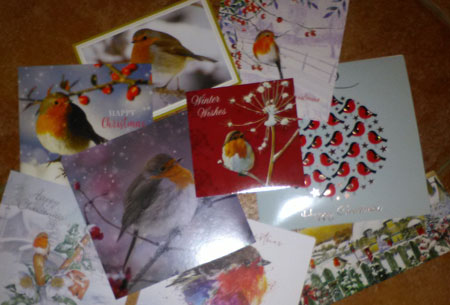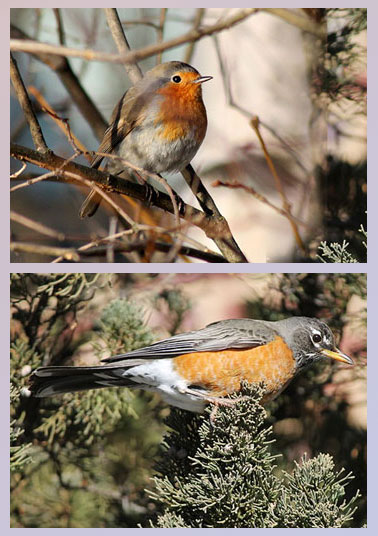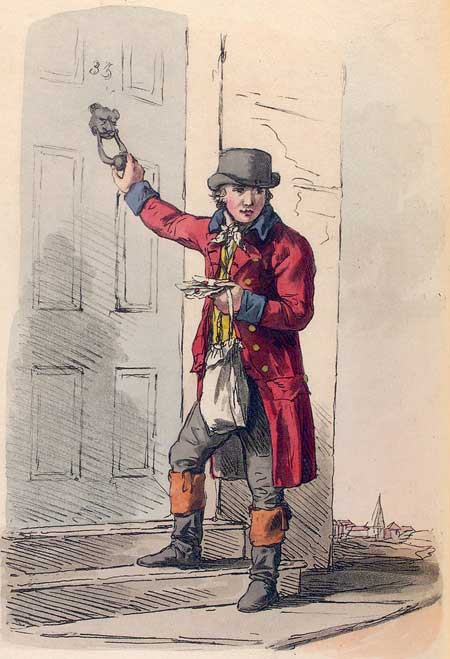Christmas and robins
So how did the association between the English robin and Christmas come about? The answer is tied in with the very naming of the bird itself in recent times, because it didn’t always have the present name. Long ago, the English called it the Ruddock (from the ruddy coloured breast). A little later, by the medieval period, it had become known as ‘The Redbreast.’ Then, by the time the Tudors and Elizabethan had arrived, it had already become common practice to attach popular Christian names to birds and other animals. So we had Jenny Wren for instance, and the Redbreast became Robin Redbreast, after the diminutive of Robert.
Later still, in Victorian times, with the arrival of an efficient and reliable postal servce for everyone, aided by the availability of the first postage stamps, folks began sending one another greetings on holidays – and at Christmas in particular. This coincided with the availability of low-cost printed cards, as well.
Early 19th-century postman
The postmen of the Royal Mail who delivered them wore red tunics (yes, prior to privatisation, the English had their letters delivered by the Queen’s postal service!). Very soon, they became fondly known as robins, and so the bird of that name began appearing on the cards too. This association grew and grew and really took off during the 20th century, by which time the robin was everywhere to be seen at Christmas, on wrapping paper, toys and cards of every shape and size. Eventually, the ‘redbreast’ part of the name was dropped, and the bird simply became know as the Robin – the name that it enjoys still to this day.



